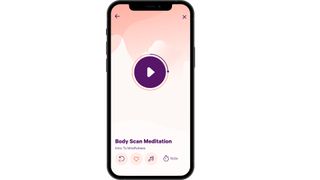Smiling Mind is a free meditation tool in app format that can bring calm into the classroom that students then can take out into their lives.
The idea is to offer meditation, focused on thought and breath work, as a tool that students can learn from and have access to whenever they need, and support SEL. By offering private guidance it can help students of all ages, abilities, and emotional levels have access to a moment of calm right there in the room.
The app is built to be very easy to use and offers guidance for complete beginners as well as right up into more advanced techniques for seasoned students. This guide aims to clarify just how the app works, how it can be used in the classroom and why it could be a useful tool for your class.
What is Smiling Mind?
Smiling Mind is a free meditation app that offers guidance on finding a calm and meditative state in the classroom as well as beyond that, in life.

Smiling Mind is aimed at children so it is simple, offers guidance from the most basic levels, and provides enough virtual hand-holding to ensure even less-focused students can enjoy social-emotional learning benefits. Since this is built with psychologists who specialize in certain age ranges, each of the exercises is suited to the kids using it.
This comes from an Australian not-for-profit that aims to improve mental health in the youth of today -- and tomorrow. As such, you can enjoy a relaxing Australian accent as you are guided through the various lessons that aim to gently bring kids up to a stage of learning at which they are able to meditate, a small amount at a time.
How does Smiling Mind work?
Smiling Mind is a free to download and use app that is available on iOS and Android devices. Teachers can use the app with the class, via a speaker, or have it on individual devices so each student can meditate privately.

Meditations last between 2 and 10 minutes, with plenty of guidance to keep student engaged. These can use breath work as well as body scans and visualizations to help students find a state of mindfulness.
It's worth noting that account setup can take a little time initially, so if you plan to do that across all devices, it's worth setting that time aside so you still have space for the actual meditating. It can be best to have parents or guardians setup the app so that it's ready to go in class, and also since ages 13 and under will need an adult account, this is easiest.
As a lot of these exercises are for individuals, it's also worth thinking about setting aside time to talk about what was experienced and learned, after the meditation.
What are the best Smiling Mind features?
Smiling Mind offers some fantastic tools that are intuitive and simple for most students, and since it is app-based, it can be used beyond the classroom.

Smiling Mind can be employed as an excellent conflict resolution tool, providing students a calm space to reset and reflect before coming back to the group.
A helpful offline option allows teachers to download exercises so that these can be used anywhere, inside the classroom or in a calming space out in nature, without the need for an internet connection. Students without a decent at-home internet connection also can load up on meditation exercises to use outside of class.
Students have the option to favorite exercises so that they can access these more easily later, allowing for repeated work to help improve. A reminder notification option is genuinely useful to stay on track, making progress with regular exercises.
How much does Smiling Mind cost?
Smiling Mind is free to download and use. Again, it's run by a not-for-profit company, so you won't find any ads or have to worry about your data safety. You can choose to give a donation to help maintain the service, which is run on the kindness of others.
A link on Smiling Mind's website is available if you want to give a one-time or recurring donation.
Smiling Mind best tips and tricks
Start slow
Use this to start a class, or the day, to help students relax and settle before beginning learning with a focus that can help them better absorb new knowledge.
Give home "work"
Have students continue to practice the exercises outside of school and get them to feedback how they notice it making a difference, or not, in their lives.
Work as a group
Also carry out, off-app or app-guided, group meditations so the class can feel the calm as a group before going into project work together, hopefully better bonded.

